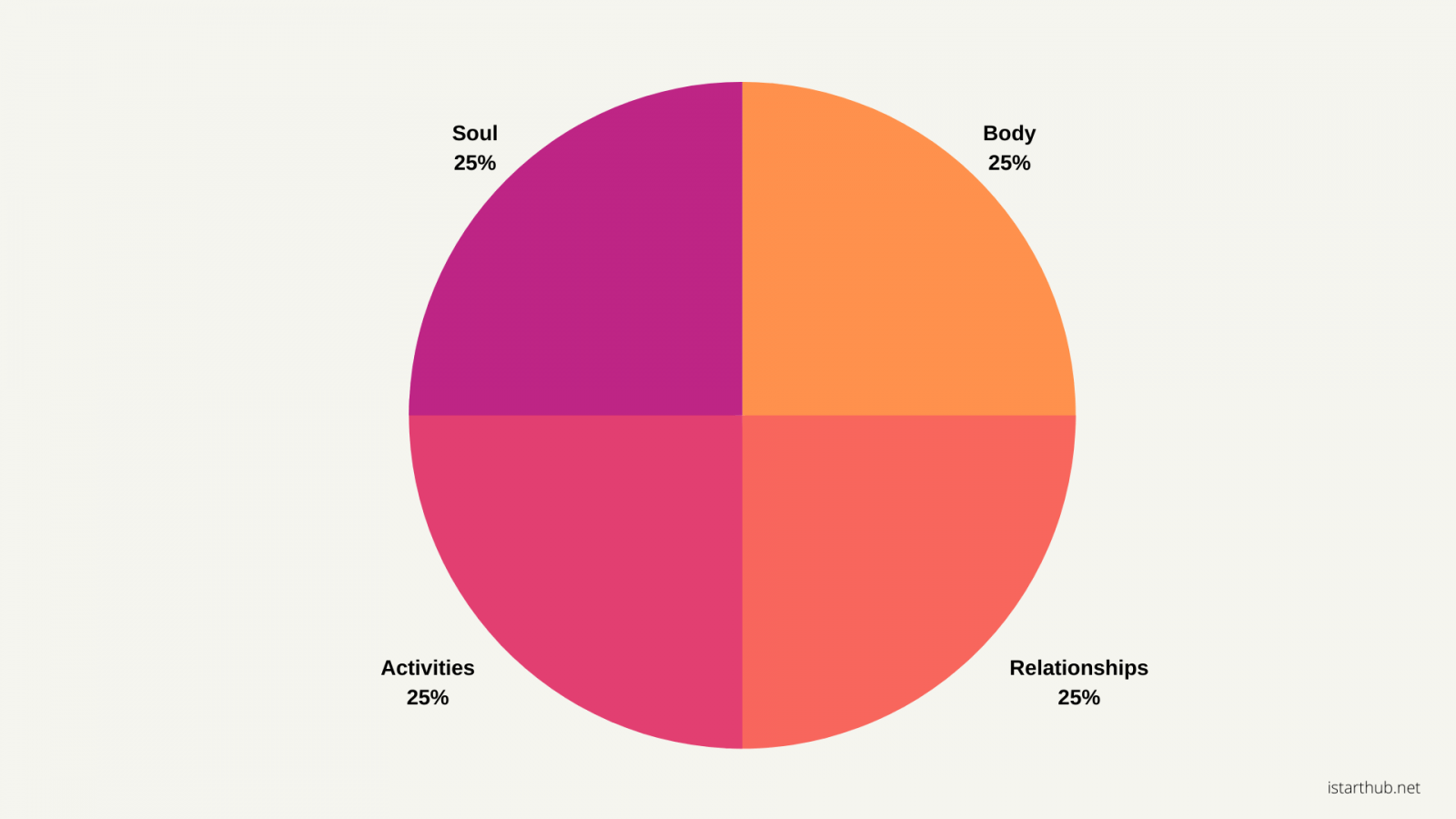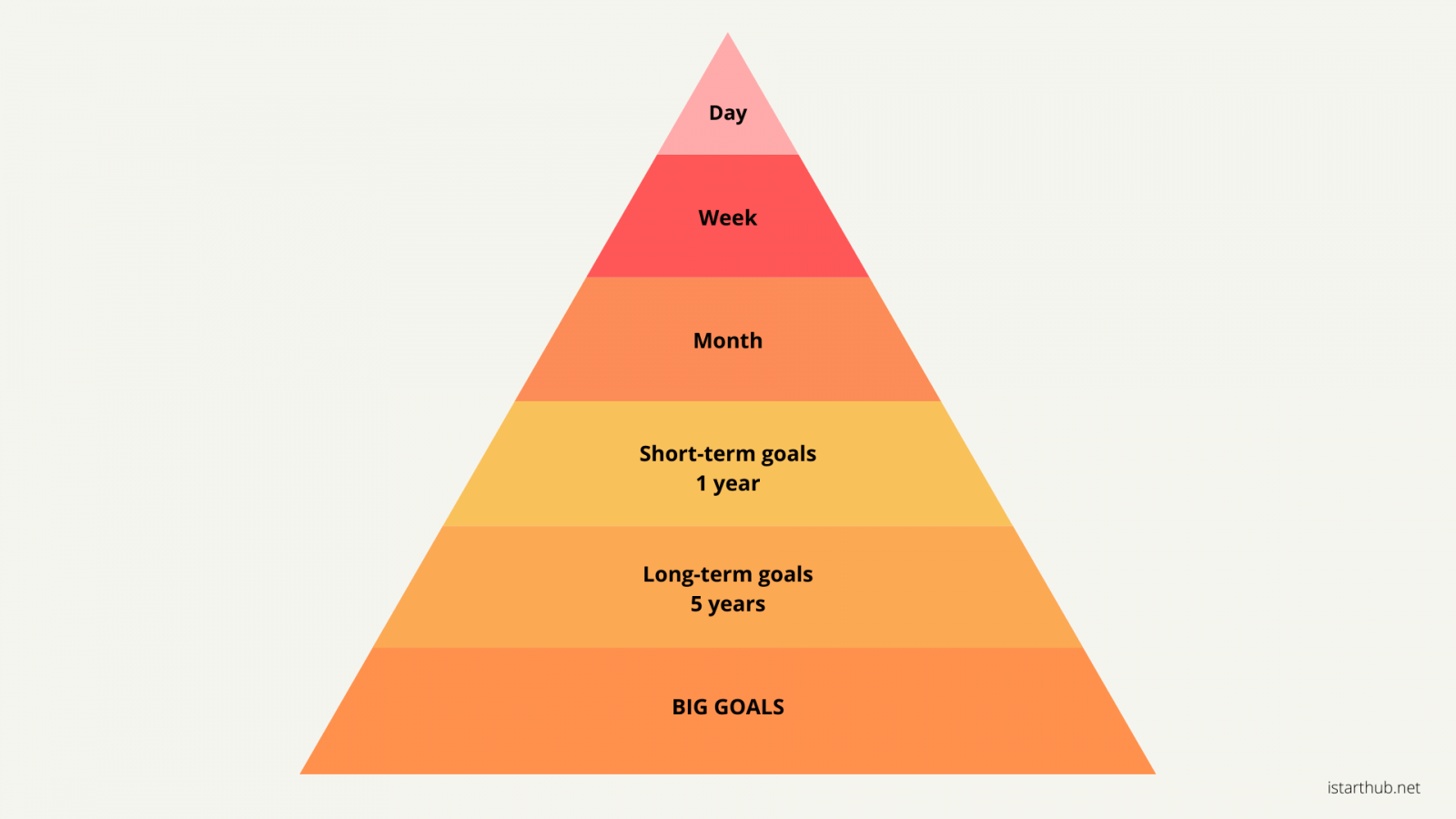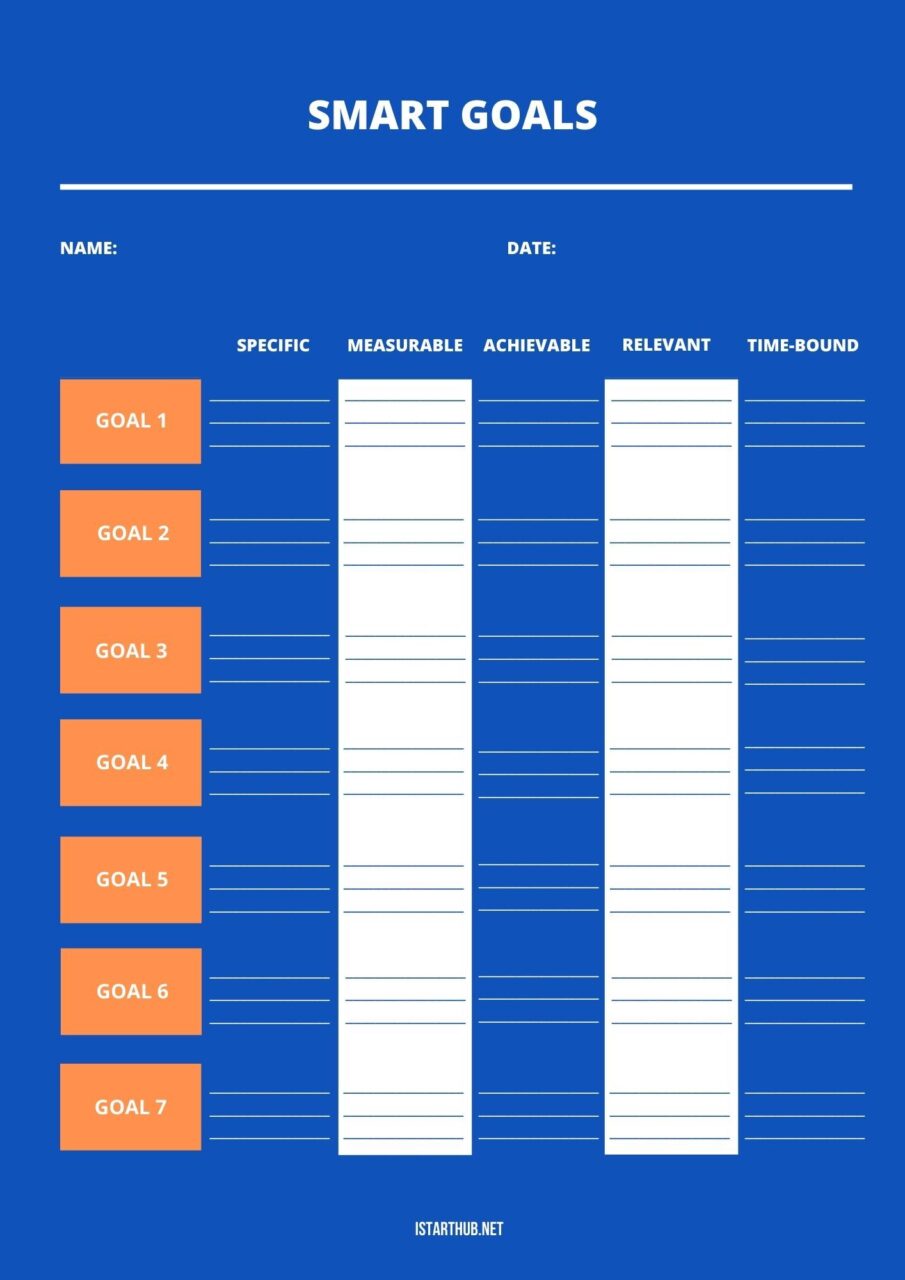“Setting goals is the first step in turning the invisible into the visible.” – Tony Robbins
Being able to achieve the goals doesn’t mean being a magician that makes all dreams come true. However, living without a goal is like building a house without a plan or traveling without a map. Our life is full of events. Every day we plan something new. Every minute we want more and expect more. Our opinion can be changed in seconds. So, it is highly important not to go astray as our fast rhythm affects everything that happens to us daily. Mastering the skills of setting goals will help you to avoid stress and achieve any objective you have in life and business.
Do you know the feeling when you think you know what you want, and you can even imagine the picture in your head, but the results are not satisfying at all? It looks like I’ve gone through so much this year, but what have I achieved at the end of the day?
Here is a step-by-step guide on how to set the goals and achieve them If you don’t understand how to turn your dreams into an action plan and achieve all of your goals this guide is perfect for you! Let‘s go.
What is a goal?
A goal is any desired result you plan to achieve in the future. Your goals cannot be defined in accordance with any principles. There are no right or wrong goals. All the goals are unique and planned in accordance with your own preferences and how you see your desired future.
Your goals can be big or small, physical or abstract. Any goal is important because it helps to achieve something you want. Living without a goal means just existing.
Why setting goals is useful?
When you set a goal you understand the end result you would like to achieve. You understand what will make you think that your goal is achieved. Knowing what you what and achieving the goals increases endorphin levels and makes you feel happier. If you want to increase the chances of reaching goals you need to understand the processes standing behind goal strategy.
How to set the goals correctly: A step by step guide
1. Think big
“You can’t have a plan for your day, until you have a plan for your life.” – Tony Robbins
Thinking about the goals we usually think within a maximum of a year. Actually, many of us set the goals for the day only. But all the successful leaders and the greatest CEOs like Elon Musk, Richard Branson, John Wooden, Mark Zuckerberg have achieved results due to having a bigger picture and long-term planning.
Answer the following questions:
- Where do you want to be in 5 years?
- What do you want to achieve in 10 years?
Although these questions may sound like a cliche, they are worthy of thinking about. In fact, it is not so easy to make your brain think about the far future events.
Can you imagine your life in detail in 10 years?
Do not limit yourself even if you think that something is impossible. Setting long-term goals means thinking out of the box, listening to your true desires, to what makes you happy in life.
2. Keep balance
What does it actually mean to keep a balance while setting new goals? Let me show you an example.
Say, all you want now is getting financial freedom and making $10k a month. Lots of people have a dream to travel the world and buy everything they want without worrying about regular payments. So, you work so hard to achieve this goal that you forgot about everything else – your family, friends, self-growth, getting new emotions, and just being happy. As a result, suddenly you start getting health problems, then your family relations get worse, you don’t have any inspiration and energy. Only depression.
“Be the change you want to see in the world.” – Mahatma Gandhi
Keep balance by setting goals for every aspect of your life. Only this approach will help you to support your inner resources and harmony making you be effective and result-oriented.
Body – physical well-being, health, and sport;
Relationships – family, friends, communication, socializing;
Activities – professional growth, business, work and career, education, self-development;
Soul – emotions and impressions, spiritual development, hobbies.

It is perfect when each of the spheres mentioned above plays the same role in your life, i.e. your energy is distributed between all the segments. Try not to ignore any of the spheres, even if you think that everything is ok with it now and there is no need to make new plans.
3. Stay focused
Stay focused and do not spread yourself too thin – that is the background of an effective goal-setting strategy.
Always start with setting long-term goals and move to short-term ones. For example, planning your day, first look at your weekly tasks and then decide what needs to be done today.
So, here are the type of goals to be considered in your goal strategy:
- Big goals
- Long-term goals
- Short-term goals
- Monthly Goals
- Weekly Goals
- Daily Goals

4. Write Down
“When you set a goal, your brain opens up a task list.” – Mel Robbins
Reaching your goals it is important to create a task list to follow. You may think that there is no need to write down anything because you are aware of what you want to achieve. But writing goals down is a very powerful and effective tool!
- Goals that are written down allow finding any solution faster.
- Writing down your goals will help you to analyze the results in a year. You will understand what you planned to achieve a year ago and how many changes happened during that time.
- Once your goals are written down your brain starts automatically searching for new opportunities to achieve them. And it is not magic but a proven fact.
5. Set SMART Goals
What is a smart goal?
SMART is a goal-setting technology that is highly used in business and management. SMART means that your goals are Specific, Measurable, Achievable, Relevant, Time-bound.
Let’s look at each of the criteria in more detail to understand how this technique works.
Specific
“When I was growing up I always wanted to be someone. Now I realize I should have been more specific.” – Lily Tomlin
Setting SMART goals means setting specific goals. Sometimes, this is the most difficult task as in most cases we don’t realize what we want. And, at the end of the day, we do not achieve the results expected. So, in this case, we should clearly understand what is our “expected” result.
Stop being a dreamer who wants “to become successful and one day achieves something in life”. Unfortunately, such a position will lead you to nowhere.
Make sure each of your goals has a specific result. If the goal is too big, consider breaking it into subgoals.
Measurable
The goal must be measurable. It is even better to specify the result of each goal with numbers.
If your goal is to get financial freedom, then how much would you like to earn?
If your goal is to lose some weight and be in a better physical form, then specify your desirable weight and how many kilometers would you like to be able to run for a particular period.
Also, what is important here, you should identify what will make you understand that your goal is achieved. Be as specific as possible.
Achievable
“The greater danger for most of us isn’t that our aim is too high and miss it, but that it is too low and we reach it.” – Michelangelo
Your goals should be inspiring, but not scary.
It is ok if you don’t understand how to reach the goals now. It takes time to transform your mind and start seeing the events pushing you to your objective. Just make sure your goals are achievable and lie in the zone of your personal growth.
Simplify. A too-big goal may seem unattainable, so you need to break it down into smaller steps.
Remember, that a goal is achievable when you understand what steps need to be done to get the results. Even if you don’t know how to do these steps.
Relevant
Is it your own goal or someone’s else? Living under the social media influence some of the goals can seem to be ours but that is not so.
For example, you follow a blogger on Instagram who has just started a fashion business and you decide that you also have to start this kind of business. Though you are a great English tutor and could build a successful tutoring company helping other people to master the language.
To make sure your goal is relevant try to answer the following questions:
- Why do you need to achieve this or that goal?
- Will it make you happier?
- Will it help you to live a better life?
- Is this goal useful?
- Is it worthy of time and energy spent on it?
Think about your life and how it could change once a specific goal is achieved.
If all of your goals are highly important, let’s move on to the next criteria.
Time-bound
“The moment you put a deadline on your dream, it becomes a goal.” – Harsha Bhogle
Every plan should have a deadline. Set time limits for your goals.
It is not necessary to be as specific as possible here. Consider the possibility of achieving the goal in this period of time. Time frames allow you to track progress and analyze the results.
Smart goal template

6. Work on goals
You can set objectives and do this correctly. But unfortunately, planning never works without action. If you want to see your objectives achieved start working on them. Your list of goals to be achieved is your action plan to be taken into consideration.
Make sure to do the steps and review the goals from time to time. Your goals can also change and it is ok. While you move to your goals you do certain steps that transform you. So, you can modify the end result you would like to achieve.
Setting the goals FAQs
1. How to set goals for life ( with examples of setting goals)
Thinking about life goals it is necessary to divide them into groups in accordance with our spheres of life. Personal life goals can be of the following types:
- Health goals
- Relationship goals
- Social goals
- Financial goals
- Career goals
- Self-development goals
- Spiritual goals
- Psychological goals
To keep balance it is recommended to set goals for each of the spheres of life. If you think that your goal is too big do the following:
- Write your big goal
- Split your big goal into the smaller goals
- Define each of the smaller goals using the SMART acronym
Here is an example of how to set goals for life.
Big goal:
- I want to be an entrepreneur
Smaller goals:
- I want to become a fitness trainer
- I want to build a fitness business
SMART goals:
- Specific – I am going to become a certified fitness trainer in New York and develop my own fitness program
- Measurable – I will join 3 Fitness courses and study over the next 6 months
- Achievable – I visit my Gym regularly and feel that I can help other people to feel healthier
- Relevant – I love sport and cannot imagine my life without it. I want to make money with my hobby.
- Time-bound – I will get certified as a fitness trainer in 6 months
2. How to set goals for business
A business cannot grow without goals. Setting objectives for the business you need to consider the following categories:
- Financial
- Non-financial
Goals for a company are also set in accordance with a SMART goal format. Here are some examples of how business objectives may look like.
Financial business objective example:
- To increase the profit of the brand by 20% over the next three months
Non-financial business objective example:
- To improve the brand-customer loyalty in 6 months by launching a new loyalty program
3. What does SMART stand for?
Acronym SMART stands for Specific, Measurable, Achievable, Relevant, Time-bound. It means that all of your goals should be set in accordance with these five criteria.
Conclusion
Setting goals effectively is a skill to learn. There are many tricks and approaches to setting goals that will be achieved but only practicing it will help you to find your ideal technique.
Take control over your life and never ignore the role of setting goals. Do it regularly and soon you will notice how your plans turn into reality.




